This article was medically reviewed by Luba Lee, FNP-BC, MS. Luba Lee, FNP-BC is a Board-Certified Family Nurse Practitioner (FNP) and educator in Tennessee with over a decade of clinical experience. Luba has certifications in Pediatric Advanced Life Support (PALS), Emergency Medicine, Advanced Cardiac Life Support (ACLS), Team Building, and Critical Care Nursing. She received her Master of Science in Nursing (MSN) from the University of Tennessee in 2006.
This article has been viewed 86,492 times.
Fungal rash is very itchy and contagious. It can be easily transmitted from one person to another through sharing of personal things such as towels, and through personal contact. Fungus loves to thrive in warm and moist areas of the body. It usually feeds on keratin, a protein found in your skin, nails, and hair. If the microbiome of your skin is altered or if you’re immunocompromised, some fungal organisms can infect your skin. However, it can be treated with home remedies and medications.
Steps
Treating Fungal Rash At Home
-
1Determine what type of fungus you have contracted. Fungi that cause rashes are commonly known as Dermatophytes. They can infect the skin, mouth, hair, and nails of the human body. There are several types of Dermatophytes, which appear in different areas of the body and cause different types of skin infections.[1]
- Look for itchy, red, ring-shaped rashes. These are ringworms, and the ones on your face, trunk, and limbs are known as tinea corporis while ones on feet are tinea pedis. Ringworm is highly contagious.
- Check for blisters, and peeling or cracking skin. If this is on your feet, it is Athlete's foot, and will probably be accompanied by a burning sensation. Blistering and rashes on your groin or inner thigh are Jock itch, which is similar to ringworm, but exists in a different part of your body.
- Check your nails. Nail fungus will make your nails yellow and brittle. They can also thicken, and become painful when wearing shoes.
- Look for patches of skin discoloration. If these patches are can be brown, pink, or white in color, and on your back, neck, and upper arms, then you have Pityriasis versicolor. If they are small white patches appearing on areas like your mouth or vagina, it is Thrush. Thrush is usually only harmful if you have a weakened immune system.[2]
-
2Wash the affected area before treatment. Use antiseptic soap, which will clean the area and eliminate nearby dirt and germs. Dry with a dry cloth or a hair dryer. This is a good habit for avoiding fungus as well, but you should clean the area before applying any kind of treatment.[3]Advertisement
-
3Apply tea tree oil to affected areas. Tea tree oil has antifungal properties and is effective in treating fungal infection. You can buy it in any local pharmacy. Apply the oil to affected areas 2 to 3 times a day.
- Tea tree oil can be used at full strength or diluted. If you want to dilute it, try mixing a ratio of 1 and a half tablespoons of tea tree oil to 1 cup of warm water.
- Be very cautious when using tea tree oil when pregnant, breastfeeding, or undergoing childbirth. Some reports suggest the oil decreases contraction strength, though this is unclear due to a lack of significant scientific information.[4]
- Avoid using tea tree oil on the skin of adolescent males, as it has been known to cause the growth of breasts (gynecomastia).[5]
-
4Try apple cider vinegar. Vinegar is known to have antifungal, antibacterial, and antiseptic properties. It can help treat fungal rash because it contains acid and enzymes that create a fungus-killing chemical reaction in the skin. There are several ways you can use vinegar to treat fungal rashes.
- Dilute apple cider vinegar in a 50:50 ratio (1 cup of apple cider vinegar and 1 cup of water). You can pour a small amount of the vinegar onto a cotton ball and rub it on the affected areas 2 to 3 times per day. You can also soak the affected areas in a 50:50 mix of apple cider vinegar to water for 10 to 15 minutes. Be sure to dry the area completely after soaking.
- You can soak your entire body. Fill a tub with lukewarm water, then add 5 cups of vinegar. You can add a little more if you want your vinegar bath to be a bit more concentrated. Soak your body for about 10 to 20 minutes.
-
5Crush raw garlic and apply it directly to fungal rashes. Garlic extract inhibits the growth of microorganisms due to allicin, an active ingredient of garlic produced only when it is crushed. Additionally, ajoene is another compound found in raw garlic that is very effective in treating fungal rashes. It kills fungus in the skin and promotes faster healing.
- You can apply crushed garlic to affected areas 2 times a day. Cover these areas with gauze for better absorption.
- You can try a garlic paste, made by crushing 1 clove of garlic into small pieces and mixing it with 1 tablespoon (14.8 ml) of olive oil. You can apply this to fungal rashes several times a day to promote healing.
- You can also eat 1 clove of raw garlic every day to detox your body, including any fungus living inside.
Treating Fungal Rash With Medicine
-
1Discuss your rash with a doctor. There are a number of treatments available for different kinds of fungal rash. Some of them are available without a prescription (over the counter, or OTC), and may be cheaper options than prescription medication. Your doctor can advise you if these treatments are likely to help, or write a prescription if necessary.
- Over-the-counter medications such as terbinafine (Lamisil) are not recommended for children younger than 12. Children can use miconazole (Desenex or Neosporin) instead.
- It takes about 2 weeks to get rid of body ringworm and 4 weeks for athlete’s foot.
-
2Apply antifungal powder to areas prone to moisture. When fungal rash is already present and the area is still warm and moist, it can worsen the condition and aggravate your symptoms. Buy an antifungal powder that can be used daily. Powder prevents moisture from accumulating by absorbing it and keeping the surface of the skin dry at all times.
- Baby powder can be used in shoes to keep your feet dry during the day, especially if you work in wet conditions, or your feet sweat a lot.
-
3Apply antifungal cream on fungal rashes. Ketoconazole creams available with a prescription at any local pharmacy are widely used to treat all forms of fungal rashes. You can get it in cream form for people older than 12 or in shampoo form. This medication works by slowing the growth of the fungi that are infecting the skin. You can apply this cream once a day for 2 weeks for body ringworm and 4 weeks for athlete’s foot until the rash totally goes away.[6] Other common antifungal creams include:
- Clotrimazole, which is sold under the brand names Canesten and Lotrimin AF. This is also an OTC medication that is used to treat a wide variety of fungal infections, especially yeast infections. It can be applied 2-3 times a day for 4 weeks.
- Terbinafine, sold under the brand name Lamisil. This can also be bought without a prescription, but isn’t recommended for children 12 and under. It can be taken in cream or powder form for skin infections. There is a tablet form for fungal nail infections. Lamisil can be applied for 2 to 3 days.
- Miconazole, like Desenex and Neosporin AF, is safe for children. Apply it twice a day until the rash clears up.
- Tolnaftate, sold as Tinactin, is also safe for children. Apply it twice daily and continue treatment for a couple of days after your rash clears up.
-
4Take prescription medication as directed. In some severe cases, fungal rash can become worse, even after trying various home and OTC remedies. If that is the case, your doctor can write a prescription. In addition to creams and powders, some of these prescriptions are taken as pills, or injected directly into the bloodstream intravenously.
Preventing Fungal Rash
-
1Maintain good hygiene to avoid fungus development. Hygiene plays an important role in fungal growth. Chances are, if you don’t normally clean the areas of your body that are usually warm and moist, you will grow fungus easily. Ensure that you regularly clean and dry all parts of your body.[7]
- You should make sure that all parts of your body are cool, dry, and moisture-free.
- Keep affected areas dry and clean, especially in areas where there are skin folds.
- Always dry your feet after washing them.
- Always cut and trim your nails.
-
2Avoid sharing personal items. Sharing these items, such as towels, toothbrushes, socks, and underwear, can bring you into contact with fungus. In order to be certain that you don't pick up an infection from anyone, try to avoid sharing items that come in regular contact with the body.
- Use slippers when walking in saunas and communal shower facilities to avoid stepping on fungus.
-
3Always wash your clothes and undergarments. Regularly washing clothes, especially undergarments, will remove fungus from the garments. Additionally, keeping garments clean and free of sweat will prevent the creation of an environment suitable for fungal development.
- Change your socks every day. Wear socks made of cotton, which is a more breathable material that will help keep your feet dry.
-
4Keep your home clean. This is especially important for rooms like the bedroom or bathroom, where you might spend a lot of time with exposed skin. Use disinfectants in the bathroom, and try to keep sinks, tubs, and showers dry when not in use. For the bedroom, wash bed sheets and covers regularly.
-
5Be on the lookout for additional risk factors. If you are overweight, diabetic, incontinent, or sweat heavily, you will be at greater risk for contracting a fungal rash. Certain lifestyle changes may also increase the risk of fungal rash. People who are taking high-dose or long-term antibiotics, have started using new skincare products, or have lost their mobility could contract a fungus as a result of these conditions.[8]
Expert Q&A
-
QuestionHow do I prevent or understand the cause of fungal skin rashes?
 Luba Lee, FNP-BC, MSLuba Lee, FNP-BC is a Board-Certified Family Nurse Practitioner (FNP) and educator in Tennessee with over a decade of clinical experience. Luba has certifications in Pediatric Advanced Life Support (PALS), Emergency Medicine, Advanced Cardiac Life Support (ACLS), Team Building, and Critical Care Nursing. She received her Master of Science in Nursing (MSN) from the University of Tennessee in 2006.
Luba Lee, FNP-BC, MSLuba Lee, FNP-BC is a Board-Certified Family Nurse Practitioner (FNP) and educator in Tennessee with over a decade of clinical experience. Luba has certifications in Pediatric Advanced Life Support (PALS), Emergency Medicine, Advanced Cardiac Life Support (ACLS), Team Building, and Critical Care Nursing. She received her Master of Science in Nursing (MSN) from the University of Tennessee in 2006.
Board-Certified Family Nurse Practitioner Support your immune system and practice good personal hygiene Avoid sharing towels, clothes, and shoes. Keep skin clean and dry. Avoid wearing damp clothes. Wear cotton socks and protect feet in shared bathroom areas.
Support your immune system and practice good personal hygiene Avoid sharing towels, clothes, and shoes. Keep skin clean and dry. Avoid wearing damp clothes. Wear cotton socks and protect feet in shared bathroom areas.
References
- ↑ http://www.webmd.com/skin-problems-and-treatments/guide/fungal-infections-skin
- ↑ https://www.nlm.nih.gov/medlineplus/ency/article/000626.htm
- ↑ http://my.clevelandclinic.org/health/diseases_conditions/hic_Contact_Dermatitis/hic_How_to_Care_for_a_Fungal_Rash
- ↑ http://www.mayoclinic.org/drugs-supplements/tea-tree-oil/safety/hrb-20060086
- ↑ http://www.mayoclinic.org/drugs-supplements/tea-tree-oil/safety/hrb-20060086
- ↑ https://www.nlm.nih.gov/medlineplus/druginfo/meds/a605014.html
- ↑ http://my.clevelandclinic.org/health/diseases_conditions/hic_Contact_Dermatitis/hic_How_to_Care_for_a_Fungal_Rash
- ↑ http://my.clevelandclinic.org/health/diseases_conditions/hic_Contact_Dermatitis/hic_How_to_Care_for_a_Fungal_Rash
About This Article
If you want to treat your fungal rash at home, first wash the area with antiseptic soap and dry with a cloth or hair dryer. Once it’s clean, combine a mixture of 1 part apple cider vinegar and 1 part water. Just pour a small amount of the mixture onto a cotton ball and rub it on the affected area 2 to 3 times a day. For more advice from our Medical co-author, like possible medical treatments your doctor can prescribe, read on!
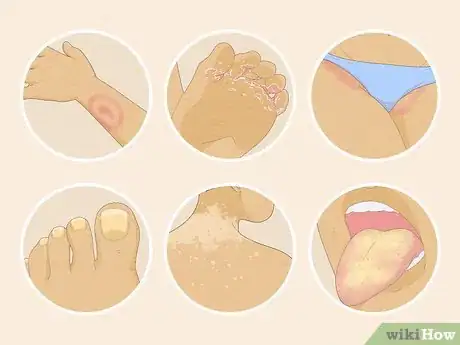
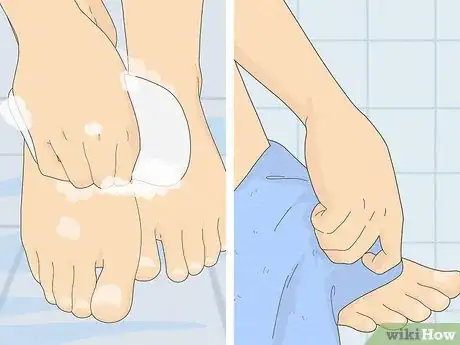
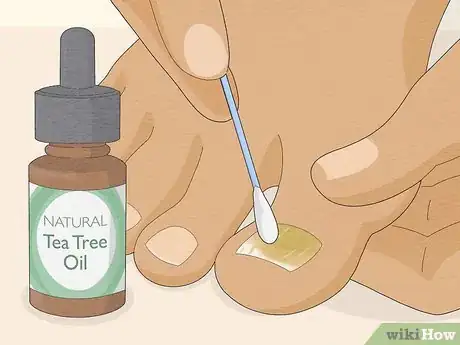
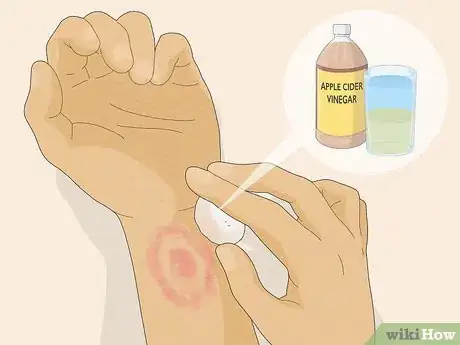
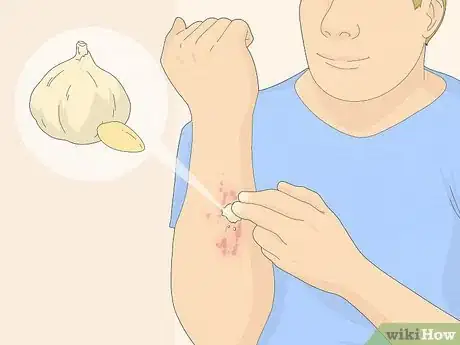
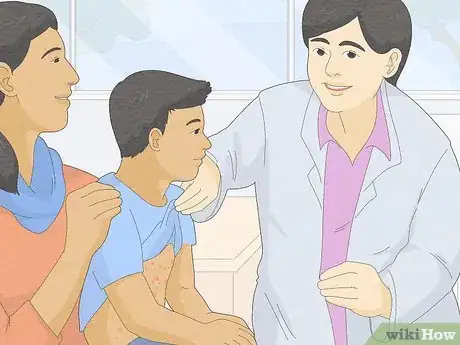
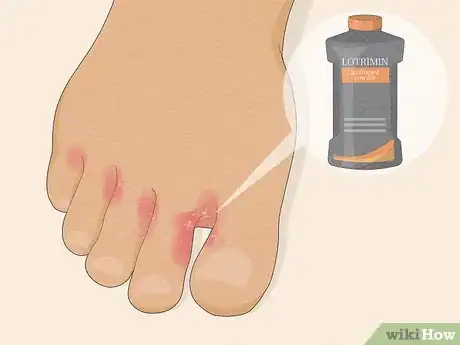

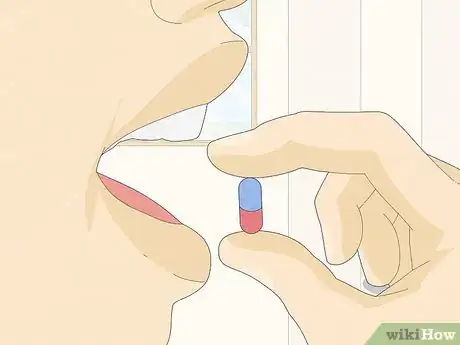
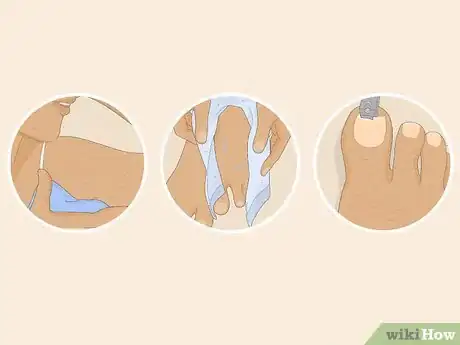
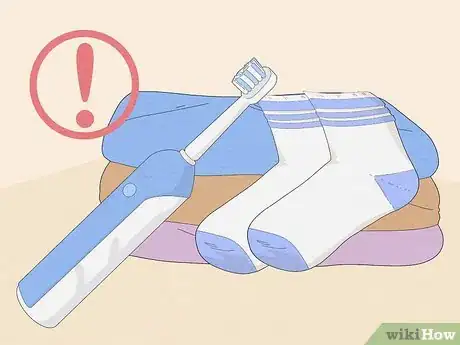
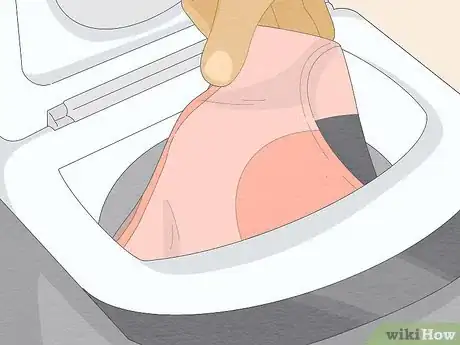
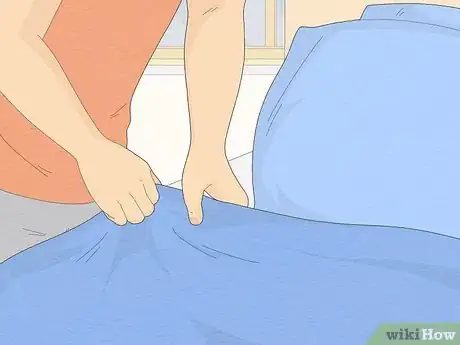
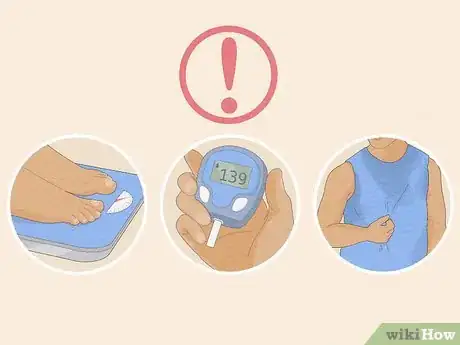
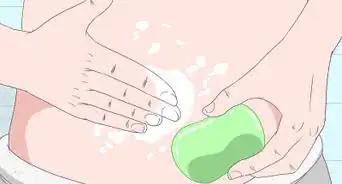
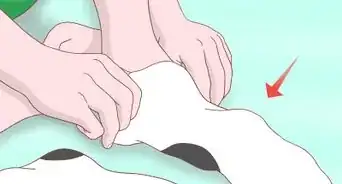

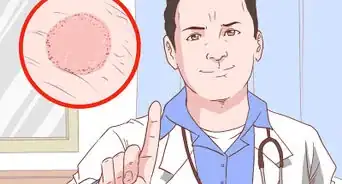





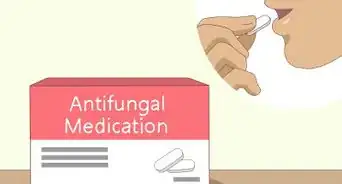
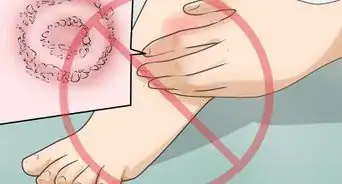
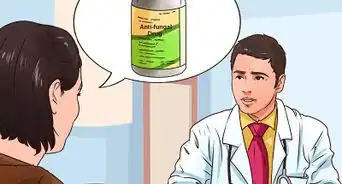
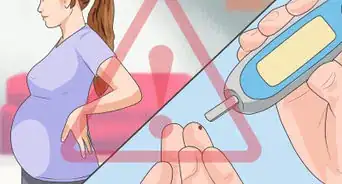
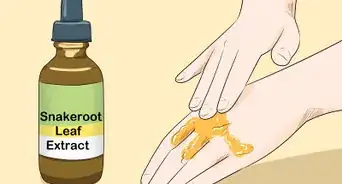








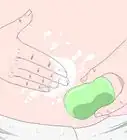
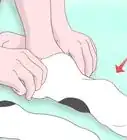

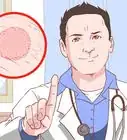



































Medical Disclaimer
The content of this article is not intended to be a substitute for professional medical advice, examination, diagnosis, or treatment. You should always contact your doctor or other qualified healthcare professional before starting, changing, or stopping any kind of health treatment.
Read More...